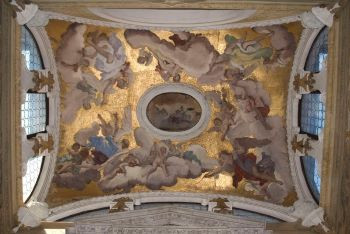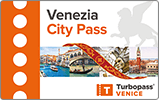



The church of Santa Maria del Carmelo (Carmini) was founded by Carmelite monks in the penultimate decade of the 13th century: work began in 1286 and, given the size of the building, continued for a long time until 1348, the year of its official consecration. Today you will find a wonderful collection of great works of art from the Renaissance period. The simple three-part Renaissance façade made of red bricks with white marble decoration was built around 1500. The interior was also remodelled in the Renaissance style in the 16th century. After the remodelling, the typically Gothic, elongated interior shows some unusual features resulting from a mixture of different styles.
The high central nave with its Gothic ribbed vault is complemented by two low side aisles, whose round arches are supported by archaic-looking columns of Byzantine-Romanesque type from the 14th century. The arcades are clad with baroque decoration of figures of saints and angels made of carved, painted and partially gilded wood. Between the windows and the arcades, you will find a 24-part cycle of paintings of saints of the Carmelite Order on both sides. The painted crucifix, which hovers above the main altar, is the work of Paolo Veneziano from the 14th century. The jewel of the church, however, is the painting ‘The Adoration of the Infant Jesus’ by Cima da Conegliano from 1509, but the sculptures in this church are also true masterpieces of sculpture.

Clickhere
to see on google maps
Address:
Santa Maria die Carmini, Sestiere Dorsoduro, 2612, 30123 Venezia VE
Free admission to Venice's museums, attractions, and tours. Free public transport can be added. Discounts included.

incl. VAT and service fees, free shipping via e-mail